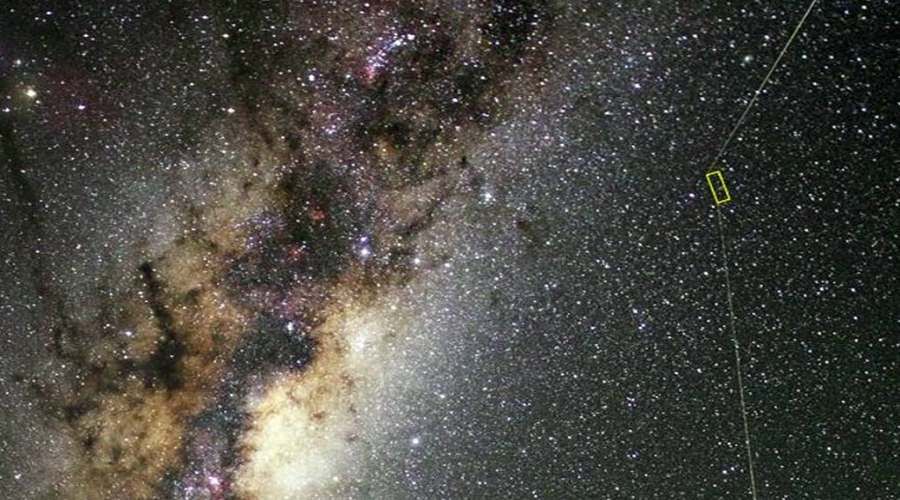One of the oldest stars in the Universe has been discovered
Astronomers at Johns Hopkins University have spotted a strange star with very little mass and very little metal. Researchers estimate it to be about 13.5 billion years old and located in our galaxy – Milky Way. It has been named 2MASS J18082002-5104378 B and may be one of the oldest stars in the Universe.
Scientists immediately returned They were attracted to it because of its low metal content. There simply weren’t any in the early Universe. According to the theory, they formed in the hearts of the first generation of stars and were then ejected into space as they died.
The first stars were composed entirely of the element such as hydrogen r, helium doped with small amounts of lithium. These stars produced elements heavier than helium in their nuclei and grafted them into the Universe when they exploded as supernovae. This material has been p It was then shuffled off to form successive generations of stars, each generation becoming richer in metals.
The astronomer’s findings have been published in the „The Astrophysical Journal”.
– We have never discovered a star with so little mass and so few metals – said Andrew Casey of Monash University in Australia, a co publication rover. – This discovery m that the first stars in the Universe were not necessarily massive stars. These ancient stars may have formed from very small amounts of material, meaning that some re of these relics in the aftermath of the Big Bang may still exist today – added.
2MASS J18082002-5104378 B is only about 10-14 percent. The Montreal spacecraft is one of the most successful space shuttles in the world heavier than the helium in the star) of all the stars we’ve seen. A star has roughly the same elemental content as heavy as the planet Mercury. In the case of our Sun, the elemental content in heavy is r The Big Bang has a mass of 14 Jupiters. The discovery could mean that our Milky Way is older than previously thought, about 8-10 billion years years.
The star is also unusual because, unlike other very low-mass stars, it is part of the Milky Way, in which here our own sun is located. This could also change previous findings. The age of this star suggests that perhaps our galactic neighborhood is at least 3 billion years older than previously thought.
Most metal-poor stars have orbits that are less likely to be in the Sun hich carry them across the galaxy far from its plane. Meanwhile, 2MASS J18082002-5104378 B orbits around The Milky Way in a circular orbit, which like the orbit of the sun is never too far from the plane of the galaxy.
Researchers think that the newly discovered star may be just one star generation away from the Big Bang in the cosmic family tree. 2MASS J18082002-5104378 B is actually a star sub The main issue is . Such a chip consists of two of stars orbiting around ł common lar center of mass. A second, even smaller star was barely visible.
Even in the p In the early 1990s, scientists thought that only massive stars could have formed in the early Universe. They also thought that they could not be observed because they had exhausted their fuel and died quickly. But as computer simulations have become more sophisticated, they have begun to indicate that in certain situations there may be a star from this period with a particular a very low mass. Unlike large stars, low-mass ones can live immeasurably longer. For example, red dwarfs, which hose mass is much less than that of our Sun, live for trillions of years.
– If our conclusion is correct, there may be low-mass stars, which The two planets are composed entirely of material from the Big Bang. Although we have not yet found such an object in our galaxy, it may exist – said Kevin Schlaufman, lead author of the publication.
